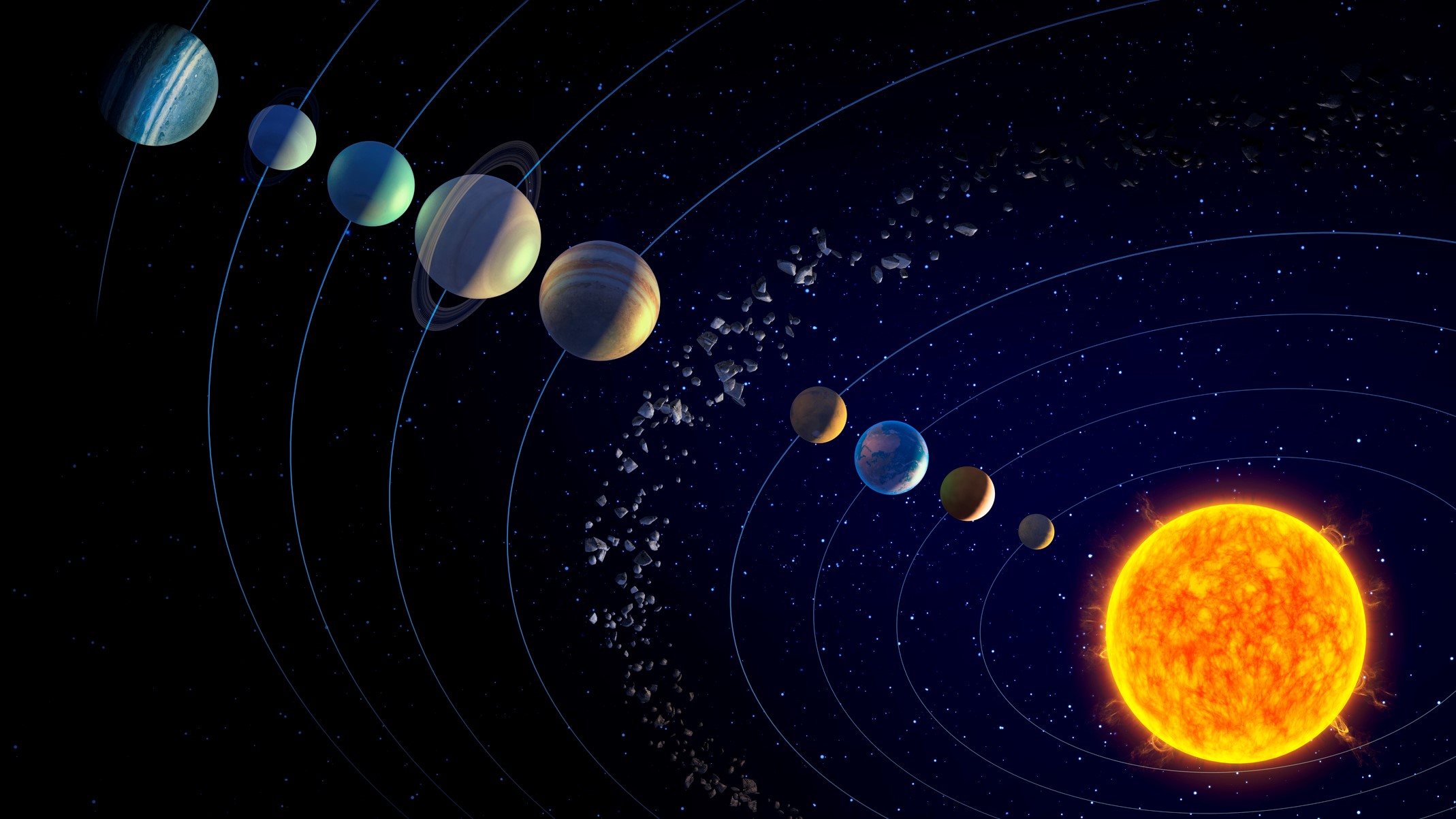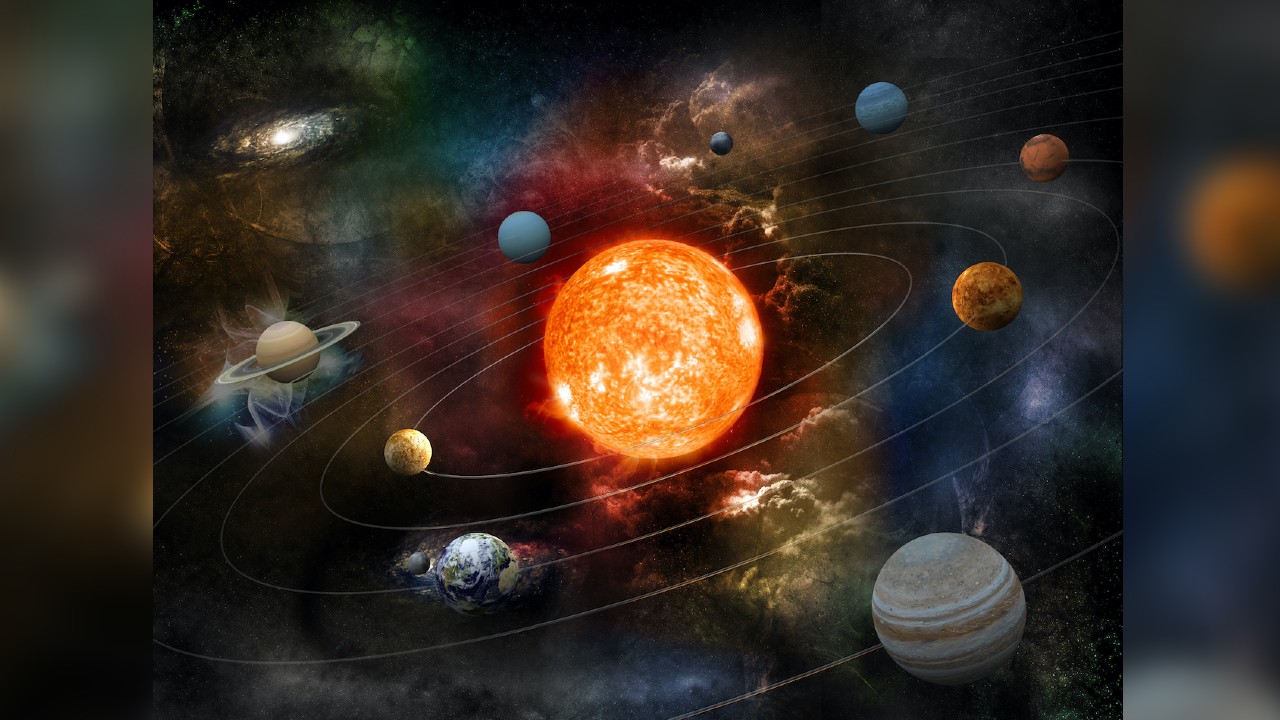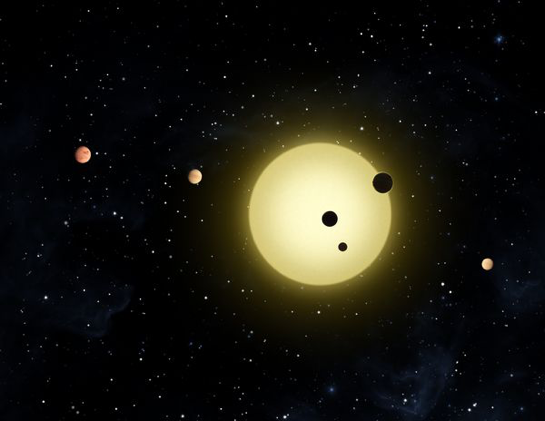E Orbits of the Planets Are Best Described As_
His equations described the orbits of the planets as well as the motion of other objects but he derived them first from principles using gravitational theory in which any object with mass attracts any other object with mass by means of a noncontact or field force that depends on the. A Comet is a ball of ice and dirt orbiting the Sun usually millions of miles from Earth.

Orbits In The Solar System Astronomy
Where r is the distance between the planet and the sun r o is the distance between the planet and the sun at perihelion closest point e is the eccentricity of the orbit and θ is the angle from perihelion.

. A constant since prehistoric times. A Jupiter B Saturn C Earth D Venus E Uranus Our understanding of the solar system has come in a way that can best be described as. The label below the picture reads Rotation of cloud of gas and dust The picture shows an elliptical orbit with a planet on it.
The place where the planet is closest to the Sun helios in Greek and moves the fastest is called the perihelion of its orbit and the place where it is farthest away and moves the most slowly is the aphelion. What geometric term describes the shape of the orbits of the planets. A changes in the gravitational attraction.
While the Sun is the predominant factor in any planets orbital parameters the other planets have non-zero measurable effects. Up to three names can. B slow and steady since the discovery of the telescope by Galileo.
They were thought to be circular. Planets do not orbit the Sun in circular orbits. The orbits are elliptical and the amount by which they deviate from a perfect circle is known as the eccentricity.
For the Moon or a satellite orbiting Earth gee in Greek the corresponding terms are perigee and apogee. A circle above the cloud shows that the cloud and dust are rotating in the anticlockwise direction. The four planets that orbit closest to the Sun are best described as answer choices mostly made of gases having rings similar to Saturns having a rocky and terrestrial surface being composed entirely of water Question 2 120 seconds Q.
The orbits of the planets are best described as ellipses. The ellipse is a closed curved form and can be close to circular especially for planets a perfectly circular orbit is impossible but some objects especially comets can. In astrophysics orbits are described as the movement of astronomical objects due to the gravitational attraction of other bodies.
So even while the Sun orbits the SSBC and Earth orbits the Sun-Earth BC it would not be true to say the Earth orbits the SSBC. 38The shape of the orbits of most of the planets in the solar system would best be described as 39. Are circles orbits of the planets.
At the center of the orbit there is a circular sun. The planets have elliptical orbits around the sun as described by. Comets orbit the sun but most are believed to inhabit in an area known as the Oort Cloud far beyond the orbit of Pluto.
As far as I know the Earth orbits around the Sun Earth barycenter while the Sun orbits the Solar System BaryCenter formed by the changing center of mass of the Solar system. Planets do not have perfectly circular orbits. The label below the picture reads Formation of planet The.
E Gaspra Which planet by itself contains the majority of mass of all the planets. The orbital eccentricity is a. Final Planetary Orbits Quiz.
For the Earth the perturbations from other planets primarily Jupiter and Saturn is described by the Milankovitch cycles which are measured variabilities of the Earths orbital parameters. They have a mix of prograde and retrograde orbits their orbits are aligned with the planets equator OD their orbits have random tilts O E A and C OF B and D QUESTION 20. Mathematical description of gravity.
Millions of pieces of rocky material of various sizes orbit the Sun between the orbits of Mars and Jupiter. Wher best describes the orbits of all but one of the major moons m the outer solar systemy Choose the best answer O Atheir orbits are prograde B. The shape of the orbits of the planets or any orbit in which the object does not escape from its primary is an ellipse.
What this means is that at a fine scale the. Kepler described the orbits of the planets as elliptical. Base your answer to the following question on the diagram below which represents nine positions of the Earth in orbit around the Sun during one complete orbit of the Moon around the Earth.
To understand the appearance of such a movement we first need to remember some concepts of general motion and gravitation.

Is The Plane Of The Ecliptic The Plane In Which The Planets Orbit The Sun The Same As The Plane In Which The Sun Orbits The Galactic Centre I Note Other Stars

Why Are Planetary Orbits Elliptical Youtube
Which Planet Has The Most Circular Orbit In Our Solar System Quora

Depiction Of The Kepler 32 Planetary System With The Star And Orbits Download Scientific Diagram

Solar System Planets Order And Formation A Guide Space

Yes Two Planets Can Both Share The Same Orbit

Atlantic Skies The Celestial Mechanics Of How The Planets Orbit The Sun In Our Solar System Saltwire

Kepler S Third Law The Movement Of Solar System Planets Space

First Neighbouring Planets That Are Both Life Friendly New Scientist

Nasa Out Of Whack Planetary System Offers Clues To A Disturbed Past
I Am Looking For The Orbits Of The Planets Of Our Solar System Seen From The Top And From The Side But Every Image I Find Is Different Where I Can Find

What Is An Exoplanet Nasa Space Place Nasa Science For Kids

This Is Everything That S Wrong With Our Definition Of Planet
I Am Looking For The Orbits Of The Planets Of Our Solar System Seen From The Top And From The Side But Every Image I Find Is Different Where I Can Find

The Orbit Of The Planets How Long Is A Year On The Other Planets Universe Today

Lesson Explainer Motion Of Planets Moons And Satellites Nagwa

Comments
Post a Comment